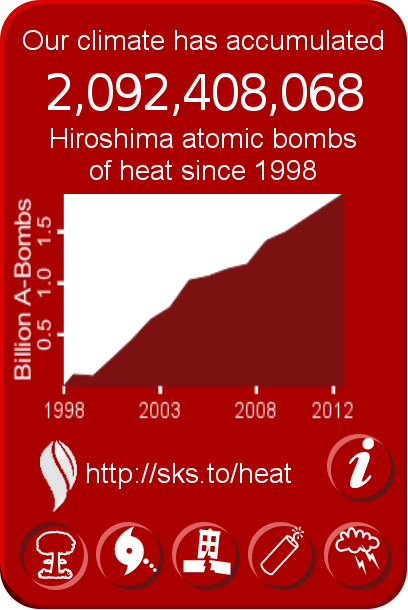Study Shows Renewable Energy Potential in Every State
A new study produced by the U.S. Department of Energy’s National Renewable Energy Laboratory (NREL) has shown that every state in the United States of America has the space and resources to generate clean energy.
The report, U.S. RE Technical Potential, looked at the available renewable resources in every state in the nation, and established an upper boundary estimate of development potential.
http://www.nrel.gov/news/press/2012/1948.html
Results
For each technology, we provide a brief summary of our findings along with a figure (map) showing the total estimated technical potential for all states and a table listing the total estimated technical potential by state.
Solar Power Technologies
Utility-Scale PV (Urban)
The total estimated annual technical potential in the United States for urban utility-scale PV is 2,232 terawatt-hours (TWh). Texas and California have the highest estimated technical potential, a result of a combination of good solar resource and large population. Figure 2 and Table 2 present the total estimated technical potential for urban utility-scale PV.
Utility-Scale PV (Rural)
Rural utility-scale PV leads all other technologies in technical potential. This is a result of relatively high power density, the absence of minimum resource threshold, and the availability of large swaths for development. Texas accounts for roughly 14% (38,993 TWh) of the entire estimated U.S. technical potential for utility-scale PV (280,613 TWh). Figure 3 and Table 3 present the total estimated technical potential for rural utility-scale PV.
Rooftop PV
Total annual technical potential for rooftop PV is estimated at 818 TWh. States with the largest technical potential typically have the largest populations. California has the highest technical potential of 106 TWh due to its mix of high population and relatively good solar resource. Figure 4 and Table 4 present the total estimated technical potential for rural utility-scale PV.
Concentrating Solar Power
Technical potential for CSP exists predominately in the Southwest. The steep cutoff of potential, as seen in Figure 5, can be attributed to the resource minimum threshold of 5 kWh/m2/day that was used in the analysis. Texas has the highest estimated potential of 22,786 TWh, which accounts for roughly 20% of the entire estimated U.S. annual technical potential for CSP (116,146 TWh). Figure 5 and Table 5 present the total estimated technical potential for concentrating solar power.
Wind Power Technologies
Onshore Wind Power
Technical potential for onshore wind power, which is present in nearly every state, is largest in the western and central Great Plains and lowest in the southeastern United States. While the wind resource intensity in the Great Plains is not as high as it is in some areas of the western United States, very little of the land area is excluded due to insufficient resource or due to other exclusions. In the eastern and western United States, the wind resource is more limited in coverage and is more likely to be impacted by environmental exclusions. Texas has the highest estimated annual potential of 5,552 TWh, which accounts for roughly 17% of the entire estimated U.S. annual technical potential for onshore wind (32,784 TWh). Figure 6 and Table 6 present the total estimated technical potential for onshore wind power.
Offshore Wind Power
Technical potential for offshore wind power is present in significant quantities in all offshore regions of the United States. Wind speeds off the Atlantic Coast and in the Gulf of Mexico are lower than they are off the Pacific Coast, but the presence of shallower waters there makes these regions more attractive for development. Hawaii has the highest estimated annual potential of 2,837 TWh, which accounts for roughly 17% of the entire estimated U.S. annual technical potential for offshore wind (16,975 TWh). Figure 7 and Table 7 present the total estimated technical potential for offshore wind power.
Biopower Technologies
Biopower (Solid and Gaseous)
Solid biomass accounts for 82% of the 400 TWh total estimated annual technical potential of biopower; of that, crop residues are the largest contributor. Gaseous biomass has an estimated annual technical potential of 88 TWh, of which landfills were the largest contributor. Figure 8 and Table 8 present the total estimated technical potential for biopower.
Geothermal Energy Technologies
Hydrothermal Power Systems
In the assessment, 71 TWh of electric power generation potential is the estimated total from existing (identified) hydrothermal sites spread among 13 states. An additional 237 TWh of undiscovered hydrothermal resources are estimated to exist among these same states. Figure 9 and Table 9 present the total estimated technical potential for hydrothermal power systems.
Enhanced Geothermal Systems
The vast majority of the geothermal potential for EGS (31,344 TWh) within the contiguous United States is located in the westernmost portion of the country. The Rocky Mountain States, and the Great Basin particularly, contain the most favorable resource for EGS (17,414 TWh). However, even the central and eastern portions of the country have 13,930 TWh of potential for EGS development. Note that, especially in western states, a considerable portion of the EGS resource occurs on protected land and was filtered out after exclusions were applied. Figure 10 and Table 10 present the total estimated technical potential for enhanced geothermal systems.
Hydropower Technologies
Hydropower
According to Hall et al. (2006), technical potential for hydropower exists predominately in the Northwest and Alaska with a combined total estimated at 69 TWh annually, which accounts for roughly 27% of the entire estimated U.S. annual technical potential for hydropower (259 TWh). Figure 11 and Table 11 present the total estimated technical potential for hydropower.
(Lots of nice charts and maps in the pdfs as well.)
For reference, in 2009, total US energy use was 25,000 TWh, of which 4,000 was for electricity (what most of these replace).


